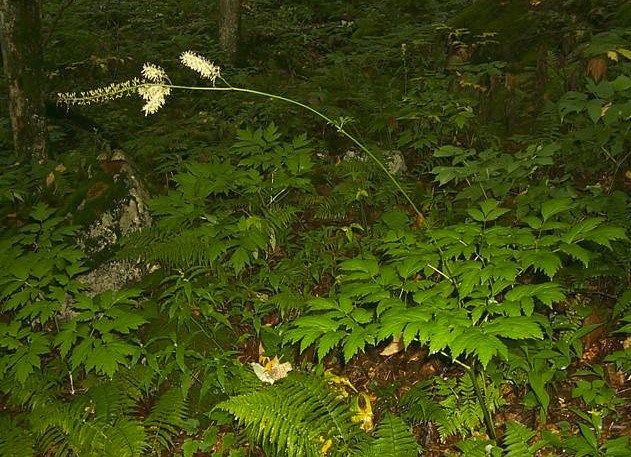
Photo by Gary Kauffman
The illegal harvesting of plants for commercial sale in the herbal remedy and floral markets is a growing concern along the Blue Ridge Parkway, where individual poachers have been caught leaving the park with tens of thousands of plants. Numerous species of plants targeted by poachers are found in the Blue Ridge Mountains and there is evidence that illegal harvesting activity is increasing. Some of these species do not recover quickly (or at all) from intense harvesting, and are being eliminated from habitats that are accessible to poachers. The close proximity of desirable species to the parkway itself makes them particularly vulnerable to illegal harvesting.
The National Park Service is working with NatureServe to develop monitoring plans for several plant species known to be significant poaching targets, including galax (Galax urceolata), black cohosh (Actaea racemosa), bloodroot (Sanguinaria canadensis), ginseng (Panax quinquefolius) and several species of trillium (Trillium spp.). With the exception of galax, these plants are often found in the same habitats, in concentrations large enough to make sampling feasible and to make the results statistically informative. If monitoring efforts indicate significant declines in populations of these plants, park managers will determine if and where additional law enforcement should be deployed, or how best to target more public education efforts.
The goals of this long-term monitoring effort are to determine whether populations of commonly-poached plant species are declining along the Blue Ridge Parkway and to detect any early warning signs that other potential poaching targets may be declining as well. Specific objectives are to:
- Be able to detect a 30% decrease in the overall abundance of galax, black cohosh, bloodroot, ginseng and trilliums (Trillium spp.) within the Blue Ridge Parkway study area.
- Detect a 30% decrease in the ratio of large (greater than 3.5 inches or 8.9 centimeters ) to small leaves in each monitored galax population.
- Periodically collect and qualitatively review presence and absence data of all species found in sample units for patterns indicative of potential large-scale change in species composition and abundance.
Last updated: July 26, 2018
